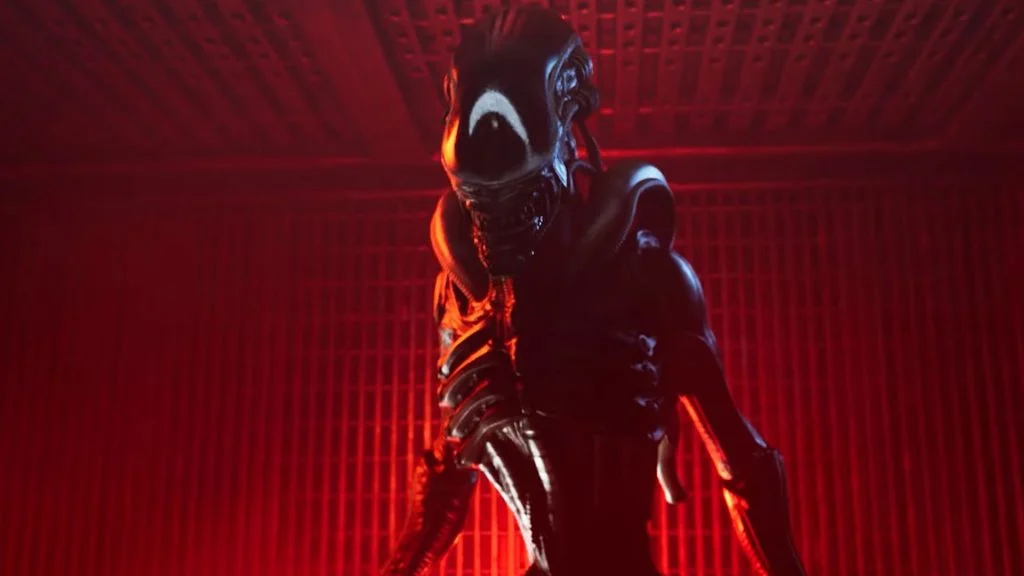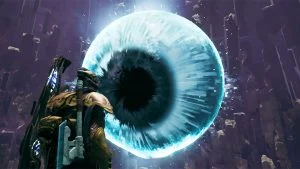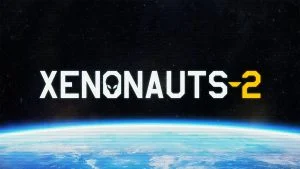Aliens: Dark Descent had me from the word go. From the starting cutscene through the tutorial, it just kept surprising me with more details and interesting mechanics. The game’s flaws started to creep in after a dozen hours, but I ultimately enjoyed it.
Aliens: Dark Descent is a single-player squad-based tactics game brought to us by Tindalos Interactive and Focus Entertainment. It also features the resource management of Survival Horror mixed with X-COM’s macro-game.
You play as Administrator Maeko Hayes of the space station Pioneer. Xenomorphs get loose, and you’re rescued by Colonial Marines. Sadly, Wey-Yu’s protocols have blown their ship out of the sky, leaving it broken on the planet below. Together, you will investigate planet Lethe and try to call for help while rescuing whoever you can.
Dark Descent is not like the other recent Aliens title, Aliens: Fireteam Elite. Not just because Xenos are sturdier and harder to hit; every close encounter makes the hive bring out more enemies and more dangerous types until you leave or die. That time pressure soaks through the entire campaign.
Welcome to Lethe
Each mission area is vast and full of points of interest. There are plenty of optional tasks, granting supplies for your marines to use or make new toys, and more staff. Map rooms can be found, and doors can be welded to control enemy movement. The flashlight mechanic helps you locate loot while adding to the game’s atmosphere.
I like that they wrote in a reason for every mission taking place during rain and darkness – it adds to the atmosphere.
Speaking of atmosphere, the sound team did great work. The motion tracker is still great for building dread, but they didn’t stop there. Xenomorphs cry out as they charge, and you can hear them moving through the stages and in the walls. My personal favorite is the sound of a Xenomorph becoming aware of your presence; the longer you hear it, the more urgent it feels to get out of sight.
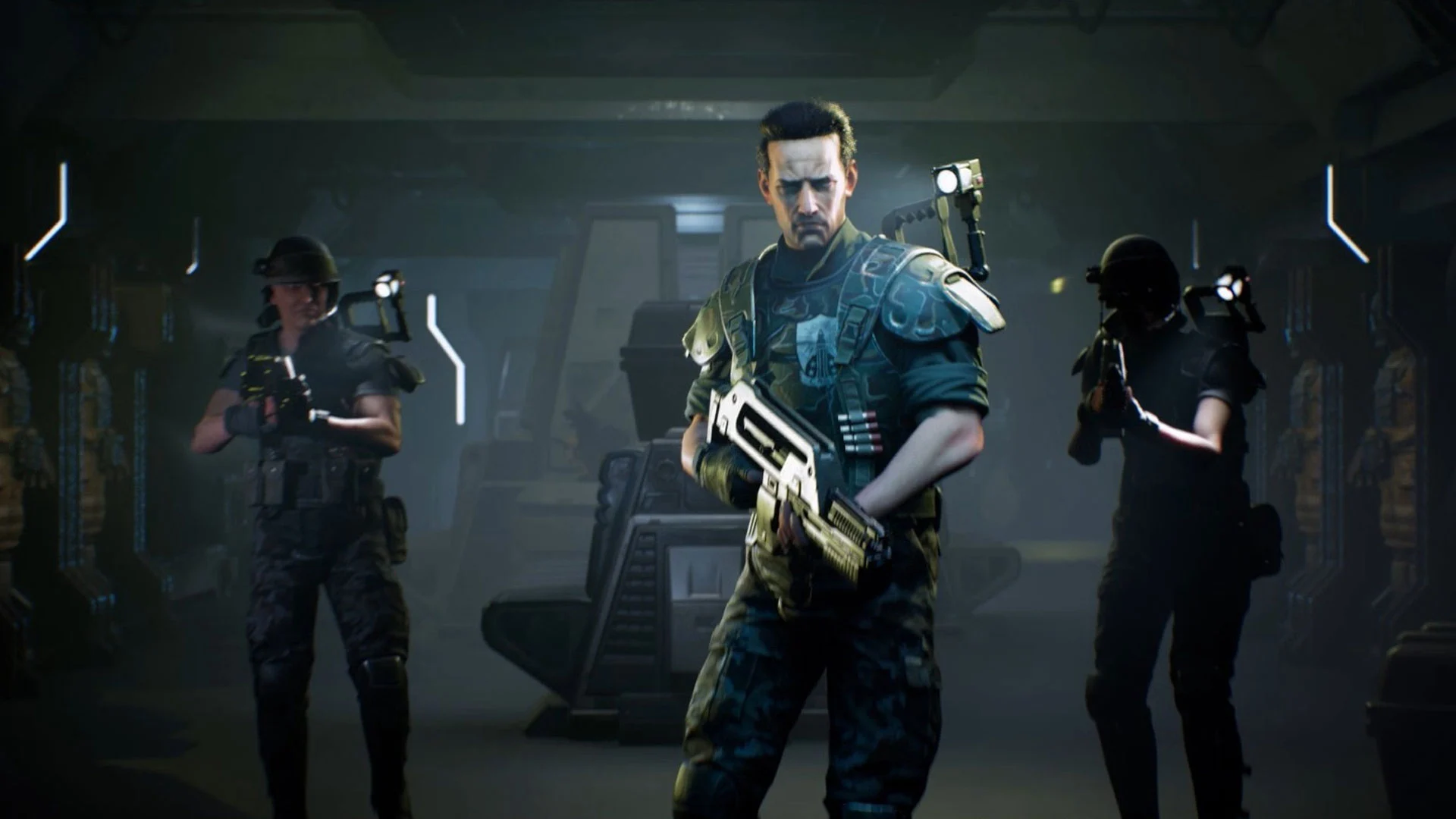
When every fight burns resources and makes the trip harder going forward, you try to avoid them. Thanks to mechanics like the motion trackers, it’s much more interactive and a fun part of the experience. Since most of a mission is a series of small skirmishes, it makes the proper fights meaningful. I loved Fireteam Elite, but having multiple “hold the line” segments per stage made the Aliens feel less special.
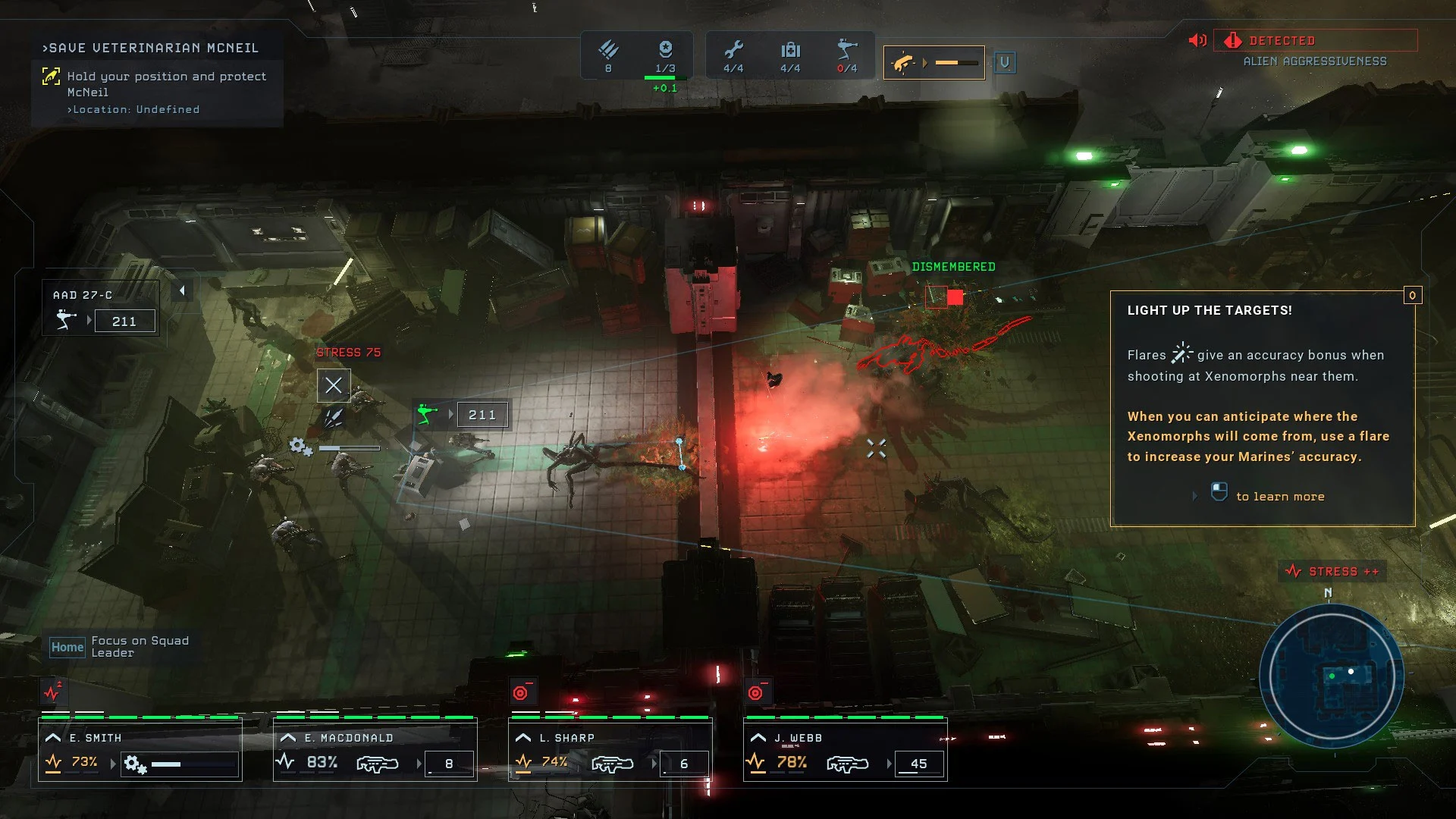
Unlike similar titles which feature randomized environments, Dark Descent takes a different approach. Each mission’s map and major objectives are fixed, but their state carries over between runs. You can return to a previously cleared area to comb it for leftover resources and tech.
There are some mandatory encounters, and they’re a blast. Dark Descent lets you issue commands to the squad in real time, and responses are snappy. The game will also slow down or even pause the game when using the Skills menu so you can make the most of your special attacks.
Watching a xenomorph close the distance, only to disintegrate from a shotgun blast doesn’t get old.
Like any good “late to the party” horror story, there’s buckets of logbooks. They’re well-written and properly archived if you’d rather read through them later. They don’t do much to break the “Aliens Story” mold, but the story is competent. The friction between Hayes and the marines feels a little forced, though.
Challenging but not Punishing
Dark Descent is at its best when you’re making tactical decisions. Your supplies are limited, and the Stress system means your troops become weaker over a mission. They can be injured, abducted, and take on other penalties. It’s similar to Darkest Dungeon’s Quirks system, only with better doctors. They can also be customized in the usual ways and experience random events at the base.
Dark Descent has plenty of difficulty options, not just the usual presets, but letting you tweak individual modifiers. It’s not as elaborate as Warhammer 40000: Mechanicus, but it adds replay value and ensures you only struggle as much as you want to. I personally altered the “Campaign Death Clock” setting; I don’t appreciate the extra time pressure on top of the escalating infestation.
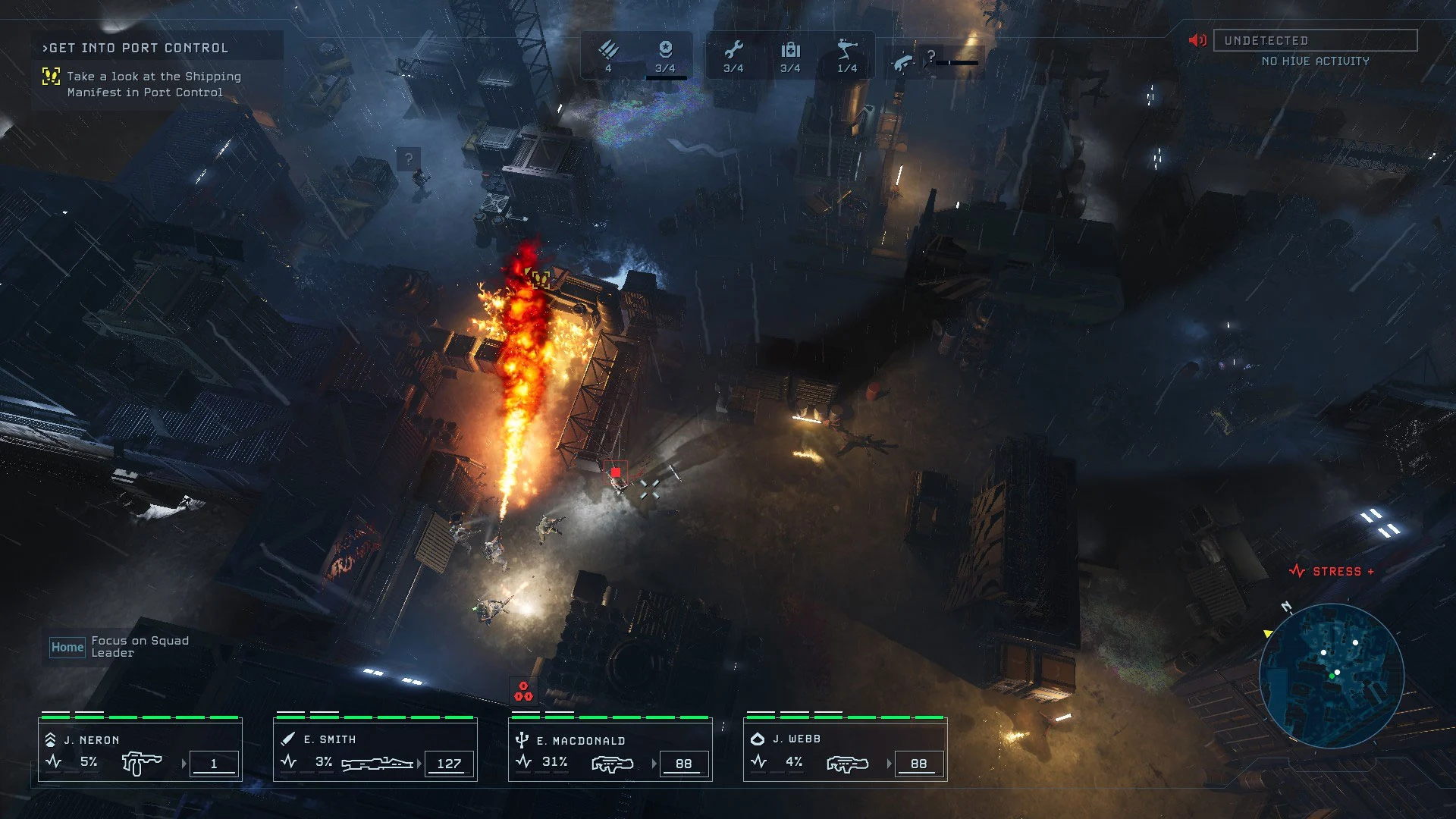
While one bad fight can kill your team, the game is generally forgiving. Marines can rest to manually save or even leave the mission half-finished to return later. Auto-saves are frequent by default, letting you step back and try another approach. There are multiple counters for the Stress and Trauma mechanics, so you’re not throwing out troops you got attached to. And I appreciate it when it warns you, “Hey, a big fight is ahead. Make sure you’re ready.”
Motion Tracker on the Fritz
The game has some technical snags. It heated up my graphics card a lot more than I’d expected, and in situations that make no sense. I’m also hearing it doesn’t use all cores by default, which… really? C’mon guys.
I started running into more obvious signs of needing polish around Mission 3. Mines refusing to detonate, stats looking different depending on the menu, and other oddball things. I need to know whether Jinx gives me a jam rate of .05% or 50%. You can’t make a decision-making game, then have us work off bad info.
A game about dodging death by inches doesn’t weather these problems well. The frequent saves make bugs less awful, but I’d rather not have them in the first place. None of these issues are beyond repair, but they’re so plain you’d think QA fell asleep on the job. It frustrates me as I’m forced to sum up Aliens: Dark Descent as “fun, but…”
Aliens: Dark Descent is a tense, sometimes frustrating bug hunt. The core gameplay loop is engaging and generally fun. The game’s flaws threaten to hollow out my enjoyment, not unlike the Xenomorphs themselves. It has the bones of a great game but has to settle for “above average.”
Aliens: Dark Descent Review
Good
Aliens: Dark Descent is a tense, sometimes frustrating bug hunt. While it brings a proven premise to a classic franchise, this game needs more time in the oven. To its credit, Dark Descent still scratches that Aliens itch in spite of the flaws. I’m certain it will be patched, but my biggest issues should have been caught before launch.
Aliens: Dark Descent is available on Steam.
See our Review Policy Here.
Reviewed on PC.

